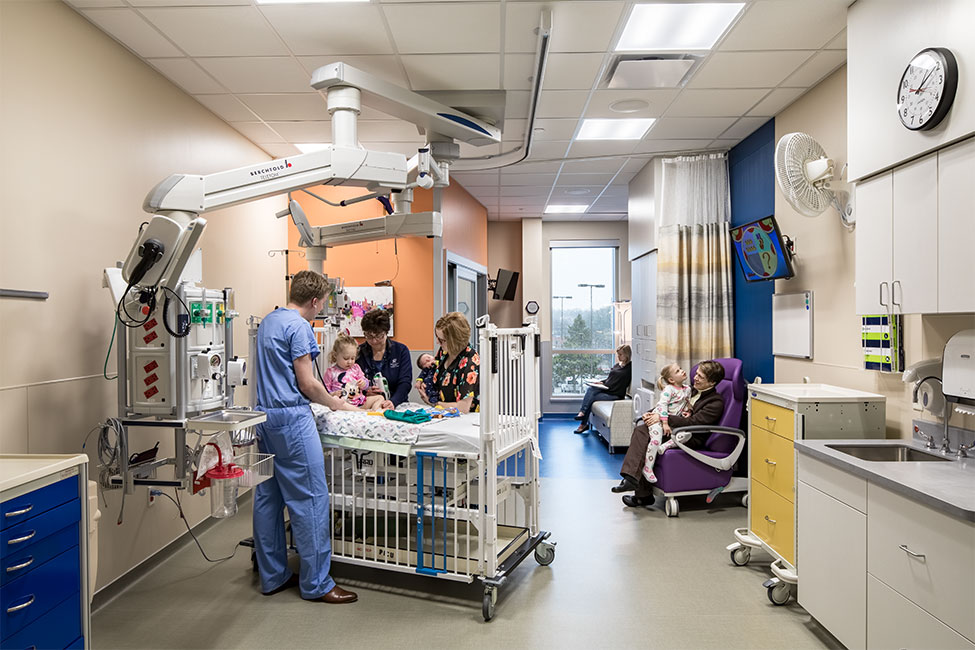
A baby on a brand-new Labor and Delivery floor of a hospital kept disappearing from nurses’ security monitors, setting off alarms and sending nurses rushing to the room to verify baby’s safety. But the baby wasn’t missing at all. False alarms were being set off in the new infant security system. The culprit? Radio frequency (RF) interference from drivers in the new LED lighting was disrupting the signal from the baby’s ankle tag to the hallway receivers.
These days, radio waves are everywhere – from microwaves to televisions, cell phones to Wi-Fi. Hospitals are no different, using wireless communication for equipment tracking, patient telemetry, infant monitoring systems and much more. Patients and families also bring their wireless devices to stay connected while in the hospital, while non-medical personnel use devices like two-way radios.
Although this increasingly crowded RF “noise” can happen at any business, hospitals need special consideration – with lives at stake, it is crucial that their equipment not have interruptions.
One of the best things hospitals can do to be proactive before building addition or renovation projects is to identify and compile a list of known systems and their operating frequencies and include them with the specifications. This knowledge would then be used by people such as lighting vendors to ensure drivers for lighting fixtures are selected so they do not generate unwanted interference.
If hospitals wait until construction is complete, they may find a disruption in their wireless communication system. They will then have to locate the source of the disruption and identify a solution, costing more time and money.
As construction was finishing up on the new Labor and Delivery floor described above, an infant security system was installed. Battery-operated tags were placed on babies and receivers in every hall so that nurses could electronically track the location of each baby and ensure none were taken off the wing without permission. A baby in one particular room kept going off the grid, setting off alarms and requiring the nurses to physically locate the baby and ensure it was safe.
The installers of the security system began testing to determine the source of the signal interference was coming from. When they tried turning off the lights in the hallway of that particular signal receiver, there was much less noise in the infant monitoring system. The problem was system signal interference from the drivers in the LED light fixtures. Knowing the frequency of the infant security system, Shive-Hattery was able to contact the light manufacturer, who replaced the drivers in all the corridor fixtures. The “noise” dropped off and the system was able to keep track of the newborn.
Some of the sources of radio frequency in hospitals are intentional:
- Wi-Fi access
- Wireless Communications
- Equipment tracking
- Patient telemetry (equipment that monitors heartbeat, blood pressure and breathing, for example, emit wireless signals that transmit this patient data
- Two-way radios
- Bluetooth devices
- Baby tags
There are also unintentional sources of RF that could cause static with communications systems:
- Computers
- Lighting drivers and ballasts
- Vacuum cleaners
- Anything with electronics or a motor
- Microwave ovens
It is important that hospitals manage their RF spectrum by knowing the frequencies of their equipment so that non-crucial sources can be minimized, changed, or removed so as to not create interference. Other options include using shielding in the building construction materials, such as the lead panels used around X-ray rooms.

